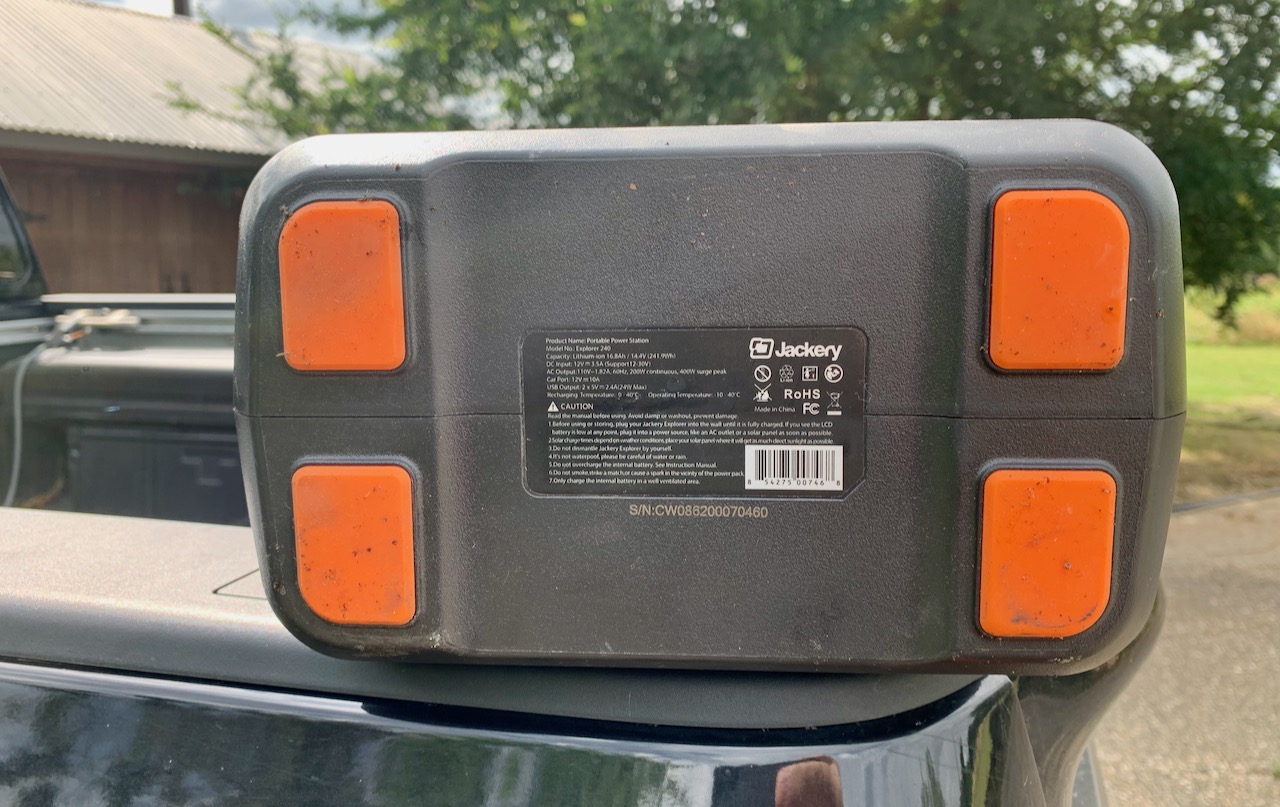When I travel or camp, I bring a CPAP machine with me. So I’ve long been looking for a way to power one of these on camping trips or in an emergency evacuation. I have some of the smaller lithium-ion packs that we recommend for go-bags, but to power a medical device or an appliance I need a lot more juice than those can provide. Enter the Jackery Explorer 240, which at 240Wh of charge is just the right size.
We reviewed two smaller Jackery power packs in the 10 amp-hour to 20 amp-hour (at 5V) range in our big review of portable power banks, and both units did very well (though neither were our top picks). The Explorer 240 is considerably larger than the others we reviewed. It’s still “portable” in the sense that it’s easily carried by hand, but you won’t be stuffing it into a go-bag any time soon. We’ll call it semi-portable.
Why get the Jackery Explorer?
Power stations in the Explorer 240’s size range — about 6.6 pounds — can make excellent preps. These products are small enough to be recharged off of portable solar panels, yet are big enough to power some small appliances and medical devices that require a regular AC wall plug (e.g. a 60W mini-fridge for 4-5 hours, depending on the circumstances).
A product like the Explorer is also good for topping off smaller packs that are packable — e.g. the larger bank is left at a base camp, while the smaller banks are packed out into bush.
Specs:
- Capacity: 240Wh, (67ah at 14.4V)
- Weight: 6.6lbs
- Price: $250
- Power ports: 2X USB (5V, 2.4A), 12V car outlet, AC outlet (110V, 200W)
- Charging ports: Proprietary input with adapters for AC wall outlet and 12V car outlet. Also compatible with Jackery’s companion solar panel.
Note: Jackery sent us the Explorer 240 for review. As always, our Prepared Promise means the source of any one piece of review gear has no bearing on the review itself.
Features and functionality
The Explorer is a very simple, no-frills station that’s basically a cluster of 18650’s attached to some basic output ports and charging circuitry. Packs in the ‘semi-portable’ product category don’t really call for any extras, so Jackery hasn’t added any “outdoor” features like built-in LEDs and whatnot. The result is better for its simplicity.
LED screen
The unit has a nice LED screen on the front that shows you the current charge level, as well as which inputs or outputs are active.
In the shot above, I have a load tester and USB multimeter hooked up to the bank. The load tester is set to draw 2.4A, and the USB multimeter shows a 5V/2.4A power draw. The LED shows 13W on that port, which is about right. I think this wattage display is a nice feature that can help you manage your use of the bank, so it’s good to know it’s accurate.
One of the features that adds size to the Jackery 240 is the 120V AC plug. The circuitry required to turn the internal lithium-ion pack’s DC current into AC is not small, so this bulks up the unit considerably.
Buttons, handle, and shell
The Explorer gives you a set of small buttons to switch on and off the different output port types. I tested them and confirmed that they work. This is a good feature because it gives you another way to control what you’re powering and when, without plugging and unplugging things.
The Explorer’s plastic shell is sturdy, but I wouldn’t want to drop it from too high. It looks like it will hold up to general outdoor use, but it’s not an overbuilt “survival” or “ruggedized” product.
At the top of the battery is a long carry handle, and on the bottom are four rubber feet. The feet are a nice touch, as it helps the unit stay securely in position on slick surfaces, without interfering with outdoors use.
The product comes with a small zipper pack that includes a 12V car charger cable, and an AC cable.
Abusing the Jackery Explorer 240
I don’t have the hardware capability to do a real load test of the Explorer’s AC ports the same way I did the USB ports on the smaller packs, so this review is not quite as systematic as our big portable roundup. However, it has something that the other roundup lacks: a real-world torture test.
Not long after Jackery sent me the charger in late November 2019, I charged it all the way up and put it in a poorly sealed toolbox in the back of my truck… where I accidentally left it for six months. Oops.
This wasn’t just any six-month stint in rattling around in the back of a Nissan Titan. It encompassed all the extremes of weather and climate, from 0 degrees Fahrenheit in the snow to the early summer Texas heat.
See, I packed that charger in the toolbox back in November because my family and I were headed to Pagosa Springs, Colorado. We went to spend Christmas in a cabin we Airbnb-ed along with all the other Texans who crowd that area every winter. I wanted to take the Explorer along for the ride as a kind of backup prep. I thought it could come in handy at some point during the trip.
It got down to zero at Pagosa Springs and it snowed quite a bit. We had so much fun that I totally forgot about the charger. I drove around with that thing in the back of my truck, getting all dirty and basically exposed to all sorts of outdoor temperature and moisture variations until the weekend before last when I went camping with my oldest daughter.
I had been thinking for a while about the Explorer. I had no idea where it was, and I wondered how I was going to explain to Jackery and the team at The Prepared that I’d totally lost this review unit. Then it hit me that I should look in that black toolbox, and there it was.
Results of the ‘torture test’
I was not optimistic about this thing’s ability to still work, but I turned it on and lo and behold, it was at 100 percent charge. Amazing.
So I packed it for our campout, and I ran my CPAP off of it (including the humidifier) for 8 hours straight. This drained it down to only 33 percent.
As of right now, I can confirm that all the ports still work, that it recharges just fine. Other than the fact that the plastic is all scuffed up from being knocked around, it’s in like-new condition.
Conclusions
This is a solid power station at a good price. And now that I’ve actually put it through a bit of an accidental torture test, I have a lot of confidence that it’s going to hold up in an outdoor setting without flaking on me. I’d definitely carry the Explorer 240 in a car-based bug-out, and it is now my standard semi-portable power station recommendation in this size range.








You are reporting the comment """ by on